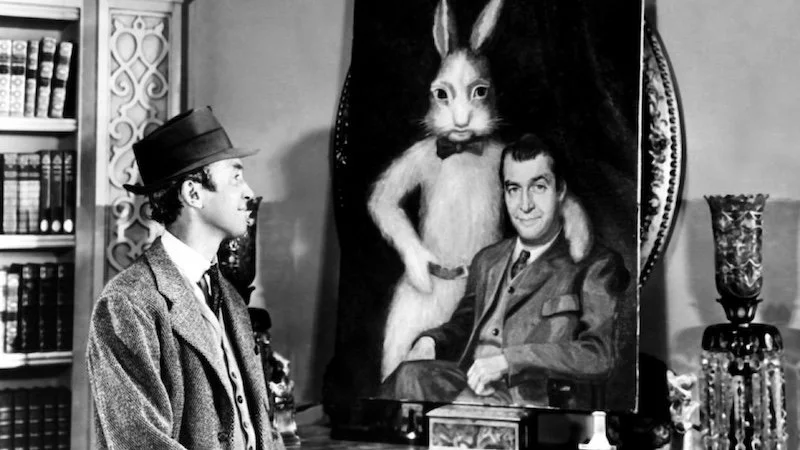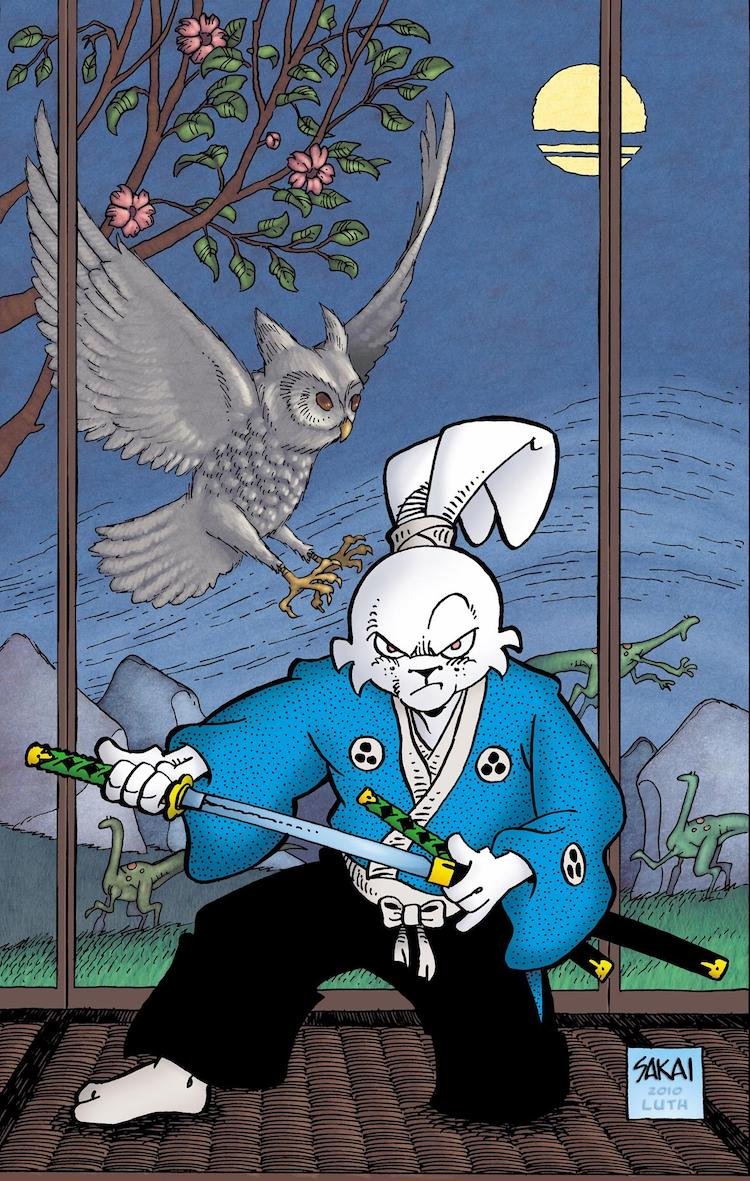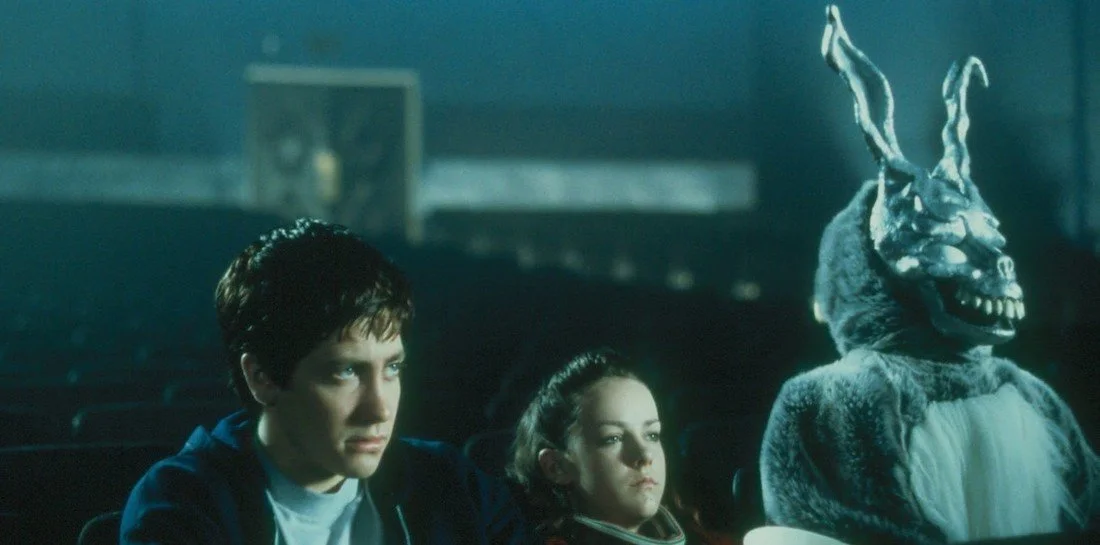Rabbits, Hares, and Moons—Oh My!
There's a haunting Japanese lullaby that my mother would sing called, “Usagi, Usagi.” It translates into “Rabbit, Rabbit” and is a call to the rabbit that lives on the moon. As with most childhood songs, I didn't begin to understand its cultural significance until I became an adult and was singing it to my children. Rabbits, in this case interchangeable with hares, are a beloved creature in Japanese folklore and contemporary culture. The main idea is that on the day of the full moon in ancient Japan, a monkey, fox, otter, and hare all vowed to perform acts of charity as tribute. They come across an old man who is hungry and the monkey, fox, and otter all give him their food. The hare does not have anything to offer, and thus jumps onto the flame of the old man's fire to cook himself to be eaten. The hare's act of self sacrifice to offer his own life so the old man could eat is considered to be the ultimate act of service.
The old man then reveals himself to be the god of the Moon and takes the hare to live with him in the night sky. I have been told expanded versions of this folktale where the rumbling of thunder is said to be the rabbit pounding rice into mochi cakes. Mochi cakes are a sweet and traditional treat associated with the lunar new year. Thanks to its association with the moon and new year, the rabbit in Japanese and Chinese culture now symbolizes rebirth and the natural life cycle, as well as self sacrifice.
There is a lot to unpack here. We could talk about the toxicity of the “nobility of self sacrifice” message found in Japanese and other Asian cultures. This tale also has a similar feel to the Greek and Roman myths of Gods testing humans for seemingly no practical reason other than to be entertained. I mean, the old man already had food given to him from the other animals, why didn't he stop the hare from jumping on the flame and say, “Bro, stop! I'm good! No need for that!” He didn't, because the Gods in these stories are always assholes. But you know who's great in this story? The hare. Maybe a little over dramatic, but you have to appreciate the effort. Rabbits rule, ancient Gods drool.
Rabbits rule so much that they have left their mark on popular culture across the world.
I should know, because I named my daughter after a six foot tall rabbit in one of my favorite movies of all time, the Jimmy Stewart classic, HARVEY (1950). The Bunnicula book series gave me safe chills and thrills. Bugs Bunny taught me opera.
Dick Bruna's “Miffy” taught me about manners, and HARVEY taught me about what it means to be happy. I am drawn to rabbits, and I often wonder how much of that magnetism comes from early exposure to this strong Asian folklore as a child.
Folklore as a concept doesn't get the respect it deserves. The folklore a child hears growing up shapes their ideas about morality, fantasy, while also subtly educating the child about the community surrounding them.
Stories are important.
Fiction, folklore, and mythology are important.
These tall tales are vital to community building and individual development, and it is by studying a culture's folklore- its fiction, that we can get a more complete picture of the people within it.
I grew up on East Asian and American Midwest folklore. That means Johnny Appleseed planted the apple tree that Paul Bunyan chopped down while rabbits ate the debris. Of these three folklore heroes, bunnies are my favorite. They are in the best movies!
As an adult, I appreciate that the rabbit themes have aged with me. DONNIE DARKO (2001) has the infamous Frank. Mysterious, eerie, yet mesmerizing, Frank the bunny is leading Donnie down a path about correcting the natural order of things and that death has meaning. Movies like POOKA (2018), which follows a man consumed by a pooka rabbit costume, and TORMENTED (2011) a Japanese horror film about being haunted by a giant stuffed rabbit, share the same central theme of regret. HARVEY (1950) is often interpreted as a story about alcoholism, but for me it is a story about rebirth of the human soul.
On the lighter side of things, audiences are still getting magic moon bunny stories. My recent favorites are THE LAST MIMZY (2007), about a stuffed rabbit that gives children powers to save the world, and Netflix's OVER THE MOON (2020) which is a contemporary take on the moon rabbit princess folktale.
While only one of the movies I mentioned is Japanese, I don't think that takes away from the power of the moon bunny myth.
I find it comforting that the idea of a magic rabbit is so prevalent across cultures that we have so much media representing it.
Look at the Easter Bunny. That folk tale is so accepted that it almost has us believing rabbits not only lay eggs, they hide them with the intention of you looking for them to then get the chocolate out of... Reading that out loud, how can you argue that folklore doesn't have an enormous influence on our culture?
So whether it is rabbits on the moon for small tots in Asia, Easter bunny eggs in the western countries, or giant rabbit pookas in Ireland, magic rabbits have definitely hopped and burrowed their way into our hearts. It is a story that we all want to tell. Folklore matters because it teaches us how we are all different, but more importantly, it shows us how we are all mostly the same.






